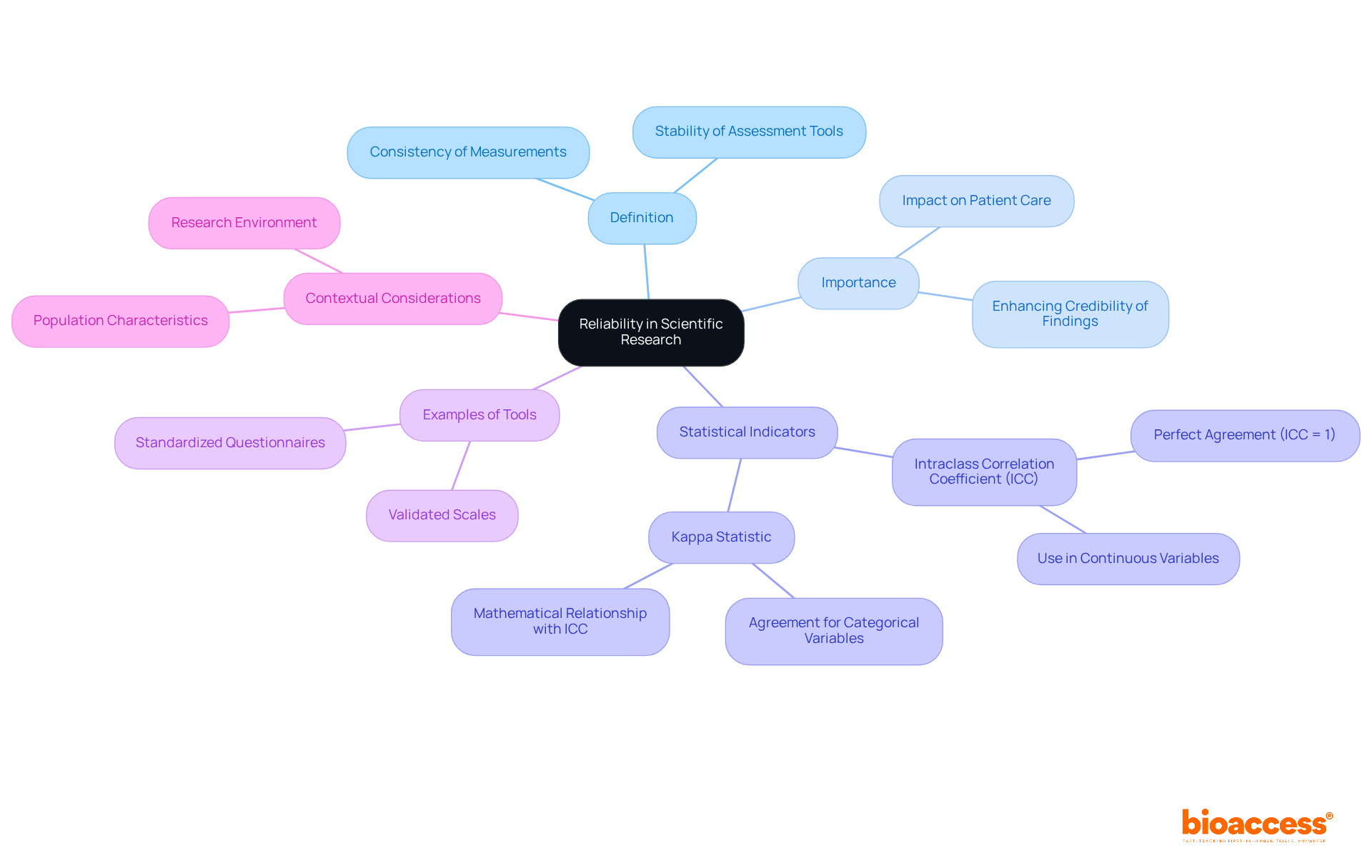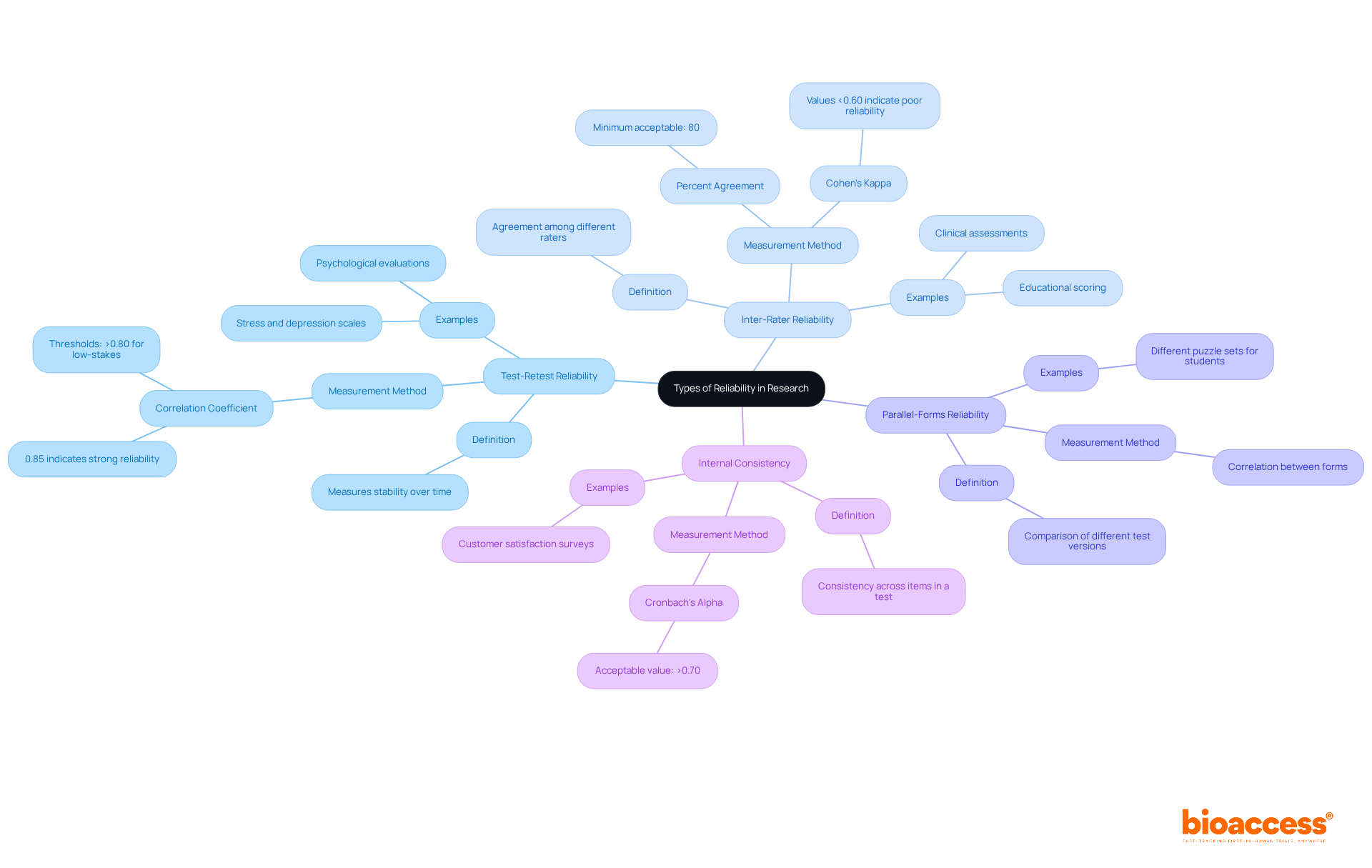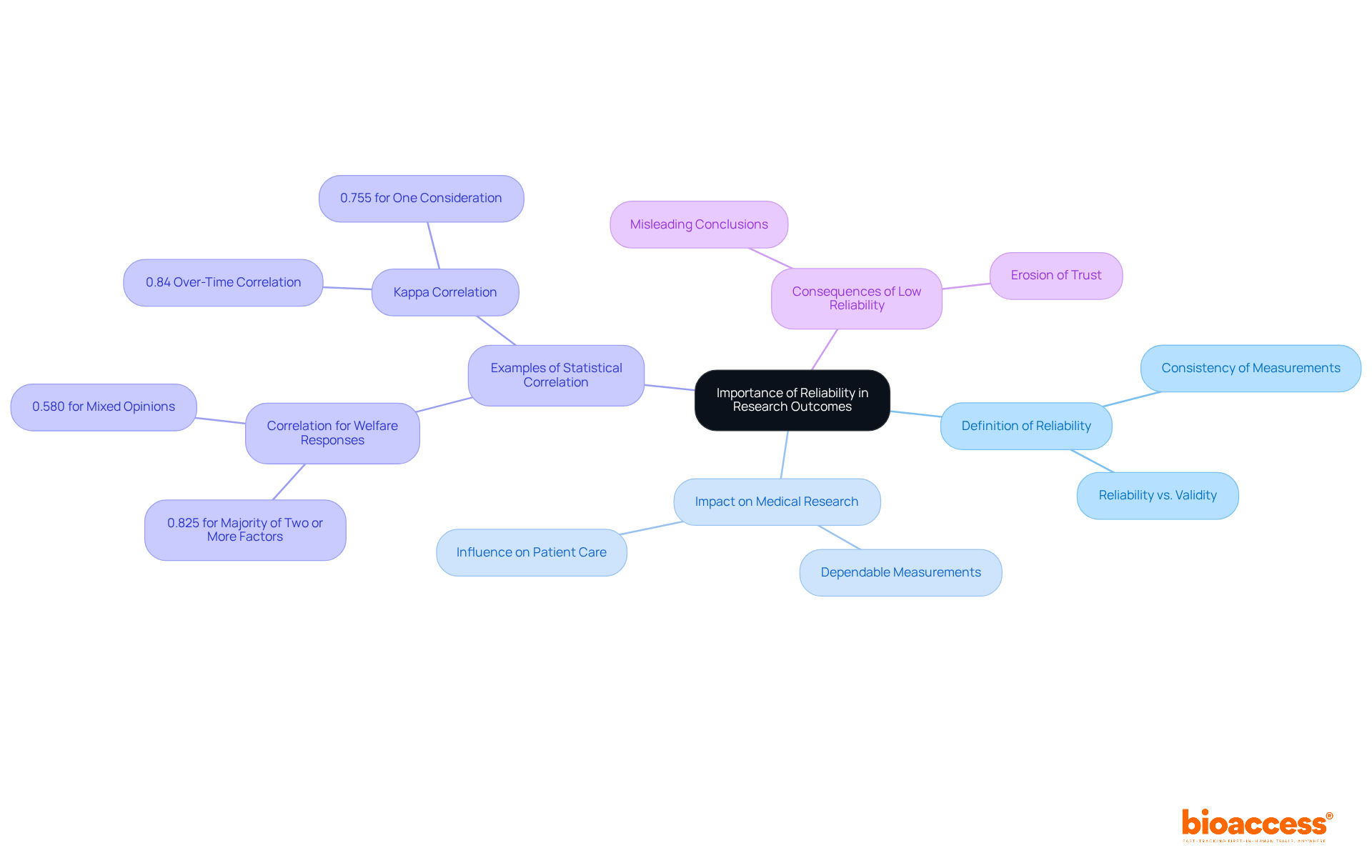


Reliability in scientific research is defined as the consistency and stability of measurement tools, a critical element in ensuring that study findings are both replicable and credible. This concept is particularly relevant in clinical research, where dependable data directly influences patient care and treatment outcomes.
Various types of reliability, such as test-retest and inter-rater reliability, play a significant role in establishing the trustworthiness of research findings. For instance, test-retest reliability assesses the stability of measurements over time, while inter-rater reliability evaluates the consistency of different observers. These forms of reliability are essential in the Medtech landscape, where accurate data can lead to improved patient outcomes and more effective treatments.
In summary, the importance of reliability cannot be overstated. As clinical researchers, it is imperative to prioritize the use of reliable measurement tools to enhance the credibility of our findings. By fostering collaboration and focusing on dependable data, we can address key challenges in clinical research and ultimately improve patient care.
Understanding the definition of reliability in scientific research is pivotal for ensuring the credibility of clinical studies. As researchers strive to produce replicable and trustworthy findings, the concept of reliability emerges as a fundamental pillar, influencing everything from data collection methods to patient care outcomes.
However, the challenge lies in navigating the various dimensions of reliability and its historical evolution. How can researchers effectively measure and implement reliability to enhance the validity of their conclusions? This question not only highlights the complexities involved but also underscores the necessity for a robust framework that supports reliable research practices.
The reliability definition in science is crucial, as it is defined by the consistency and stability of measurement or assessment tools. It reflects how consistently an instrument yields the same results upon repeated trials under identical conditions. For example, a scale that consistently records a person's weight as 70 kg demonstrates great dependability. This concept is vital in studies, ensuring that findings are replicable and reliable, which ultimately enhances the credibility of study outcomes.
In medical studies, the significance of reliability cannot be overstated. Dependable assessment instruments are essential for ensuring that data collected during studies accurately represents the phenomena being examined. This is particularly critical in healthcare environments, where decisions based on study results can significantly impact patient care and treatment outcomes.
Statistical indicators of dependability, such as the Intraclass Correlation Coefficient (ICC) and Kappa statistic, are frequently employed to evaluate the agreement between various raters or the consistency of evaluations over time. An ICC of 1 indicates perfect agreement, meaning all raters assign the exact same score to the same subject. These statistics provide a numerical basis for assessing the dependability of assessment tools, ensuring they meet the stringent criteria necessary in health studies.
Examples of reliable assessment tools in clinical research include standardized questionnaires and scales that have undergone rigorous validation processes. These tools are designed to minimize variability and bias, thus providing accurate and consistent data. Current definitions of dependability, particularly the reliability definition in science, emphasize not only the consistency of measurements but also the importance of context and the specific characteristics of the population being studied. By prioritizing dependability, researchers can enhance the validity of their findings and contribute to the advancement of knowledge in the field. As Mira Andersson states, "Validity and dependability are critical components in assessing the quality of research findings.

Dependability has undergone significant evolution since its inception, as the reliability definition in science was initially linked to the consistency of measurements in the physical sciences. In the early 20th century, psychologists began employing statistical techniques to evaluate the consistency of psychological assessments, which led to the development of various consistency coefficients. Pioneers like Charles Spearman were instrumental in this advancement, introducing the concept of 'test-retest consistency' to measure stability over time.
As the field matured, our understanding of dependability broadened to encompass various forms, including:
This evolution underscores the critical importance of the reliability definition in science for validating findings across diverse fields, ensuring that measurements are both accurate and meaningful. The ongoing refinement of dependability concepts continues to shape research methodologies, highlighting the necessity for robust statistical frameworks that underpin ethical decision-making in clinical studies.

Reliability in research is a cornerstone of credible findings, encompassing several key types, each serving distinct purposes:
Test-Retest Reliability: This type measures the stability of a test over time. For instance, a psychological evaluation that shows consistent outcomes when administered to the same group after a designated period suggests strong test-retest consistency. A correlation coefficient of 0.85 is frequently viewed as a sign of robust test-retest reliability, ensuring that the assessment tool produces stable results. It is typically favored that consistency thresholds surpass 0.80 for low-stakes assessments, underscoring the significance of stable measurements in healthcare environments.
Inter-Rater Reliability: This assesses the degree of agreement among different raters or observers. In research studies, strong inter-rater consistency is evident when various practitioners assess the same patient and reach comparable diagnoses. A minimum acceptable inter-rater agreement is typically set at 80%, ensuring that the data collected is reliable and meaningful. For example, a study revealed that thorough training for evaluators can elevate inter-rater consensus to 90%, greatly enhancing the trustworthiness of assessments in medicine.
Parallel-Forms Reliability: This involves comparing two different versions of a test that measure the same construct. If both forms yield similar results, they are deemed reliable, indicating that the test effectively assesses the intended concept across different formats.
Internal Consistency: This evaluates the consistency of results across items within a single test. A common measure of internal consistency is Cronbach's alpha, where a value above 0.70 is generally considered acceptable for lower-stakes assessments. High internal consistency ensures that the items within a test are measuring the same underlying construct, which is crucial for the validity of research findings.
Understanding these categories of the reliability definition in science is essential for researchers in clinical environments, as they directly influence the trustworthiness and practicality of study findings. Furthermore, upholding high standards of dependability is vital for ensuring patient safety; untrustworthy data can lead to incorrect conclusions and reputational damage for researchers.

The reliability definition in science stands as a cornerstone of investigation, significantly influencing the validity of findings. High dependability aligns with the reliability definition in science, ensuring that results are consistent and replicable, which is essential for establishing trust in scientific conclusions. In the realm of medical research, dependable measurements are vital for accurately evaluating treatment effectiveness, directly impacting patient care and health outcomes. Extensive trial management services, such as those provided by bioaccess, play a crucial role in enhancing trustworthiness through meticulous feasibility studies, careful site selection, and thorough compliance reviews.
For instance, studies have shown that the correlation for respondents with a majority of two or more factors for welfare was 0.825, indicating a strong consistency in responses. Conversely, the reliability definition in science indicates that low dependability can lead to misleading conclusions, undermining the credibility of research and potentially resulting in adverse implications for clinical practice. A study suggested that the relationship between target responses in two welfare interviews was 0.580 for participants with mixed opinions, highlighting the variability in responses and the necessity for thorough consistency assessments.
Therefore, researchers must diligently assess and communicate the reliability definition in science to strengthen the robustness of their studies and instill confidence among stakeholders in the healthcare sector. As Wolfgang Schauble aptly noted, "Reliability is the precondition for trust," underscoring the critical role reliability plays in establishing trust in research findings.

Reliability in scientific research stands as a cornerstone, forming the essential foundation for credible findings. It underscores the necessity for consistency and stability in measurement tools, ensuring that research outcomes can be replicated and trusted. This reliability is especially vital in clinical research, where the implications of study results have direct consequences for patient care and treatment decisions.
Key arguments throughout the article emphasize the importance of various types of reliability, such as:
Each type serves a unique purpose in validating research findings, ensuring that the data collected accurately reflects the true phenomena under investigation. Additionally, the historical evolution of reliability concepts highlights the continuous refinement of methodologies that bolster the robustness of scientific inquiry.
The significance of reliability in research cannot be overstated. Researchers must prioritize dependable measurement practices to cultivate trust in their findings. By understanding and implementing rigorous reliability standards, they not only enhance the validity of their work but also contribute to the overarching goal of improving patient outcomes in clinical settings. Embracing this commitment to reliability is crucial for advancing knowledge and ensuring that research fulfills its ultimate purpose: to inform and enhance healthcare practices.
What is the definition of reliability in scientific research?
Reliability in scientific research refers to the consistency and stability of measurement or assessment tools, indicating how consistently an instrument yields the same results upon repeated trials under identical conditions.
Why is reliability important in scientific studies?
Reliability is vital in studies because it ensures that findings are replicable and dependable, which enhances the credibility of study outcomes.
How does reliability impact medical studies specifically?
In medical studies, reliable assessment instruments are crucial for ensuring that the data collected accurately represents the phenomena being examined, which can significantly affect patient care and treatment outcomes.
What statistical indicators are used to evaluate reliability?
Statistical indicators such as the Intraclass Correlation Coefficient (ICC) and Kappa statistic are commonly used to assess the agreement between raters or the consistency of evaluations over time.
What does an ICC of 1 indicate?
An ICC of 1 indicates perfect agreement, meaning all raters assign the exact same score to the same subject.
Can you provide examples of reliable assessment tools in clinical research?
Examples of reliable assessment tools in clinical research include standardized questionnaires and scales that have undergone rigorous validation processes to minimize variability and bias.
What do current definitions of reliability emphasize?
Current definitions of reliability emphasize not only the consistency of measurements but also the importance of context and the specific characteristics of the population being studied.
How does prioritizing reliability contribute to research?
By prioritizing reliability, researchers can enhance the validity of their findings and contribute to the advancement of knowledge in their field.